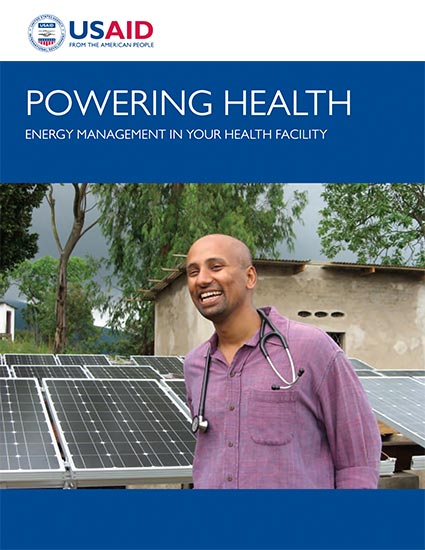- Energy Home
- How We Work
- Programs & Initiatives
- EmPOWERing Women and Girls
- Competitive Energy Procurement
- Toolkits
- Powering Health
- Cooking Technologies and Fuels
- Energy Efficiency
- Climate Risk Management
- Mini-Grids
- Monitoring & Evaluation
- Resources
- Stories
Speeches Shim
This document is also available in French (PDF 1,437K) and Spanish (PDF 1,367K).
Energy systems produce finite amounts of energy, and it is possible to run out of energy. This report presents five steps to managing energy consumption so that energy can be directed to the most important tasks.
Energy management is as much about human behavior and management, as it is about technology. The actions of health-care staff have a major impact on the amount of energy a health center consumes. In many instances, energy equipment and supply decisions occur outside the health-care facility. For example, a national government agency or donor may provide a diesel or solar system to meet the needs of a rural facility, often without input from the clinic staff. Energy use and management decisions, on the other hand, take place at the facility level, and therefore the long-term success of the energy system is the responsibility of facility managers.
Energy management determines not only how much power, electricity, or current is available to run a health-care facility, but also how that power is used. Energy management will help to:
- Maximize the lifespan of energy systems, through proper operation, use, and maintenance;
- Ensure that energy is available when needed; and
- Keep energy costs as low as possible so more money is available for medicines and other important medical necessities.
For more information on energy management strategies, see Powering Health: Energy Management in Your Health Facility, a resource for health professionals seeking to make better use of limited energy supplies. This guide assumes a health-care facility already has electricity access and that more effective management of this limited resource will improve its ability to provide routine, quality health services on demand.


Comment
Make a general inquiry or suggest an improvement.